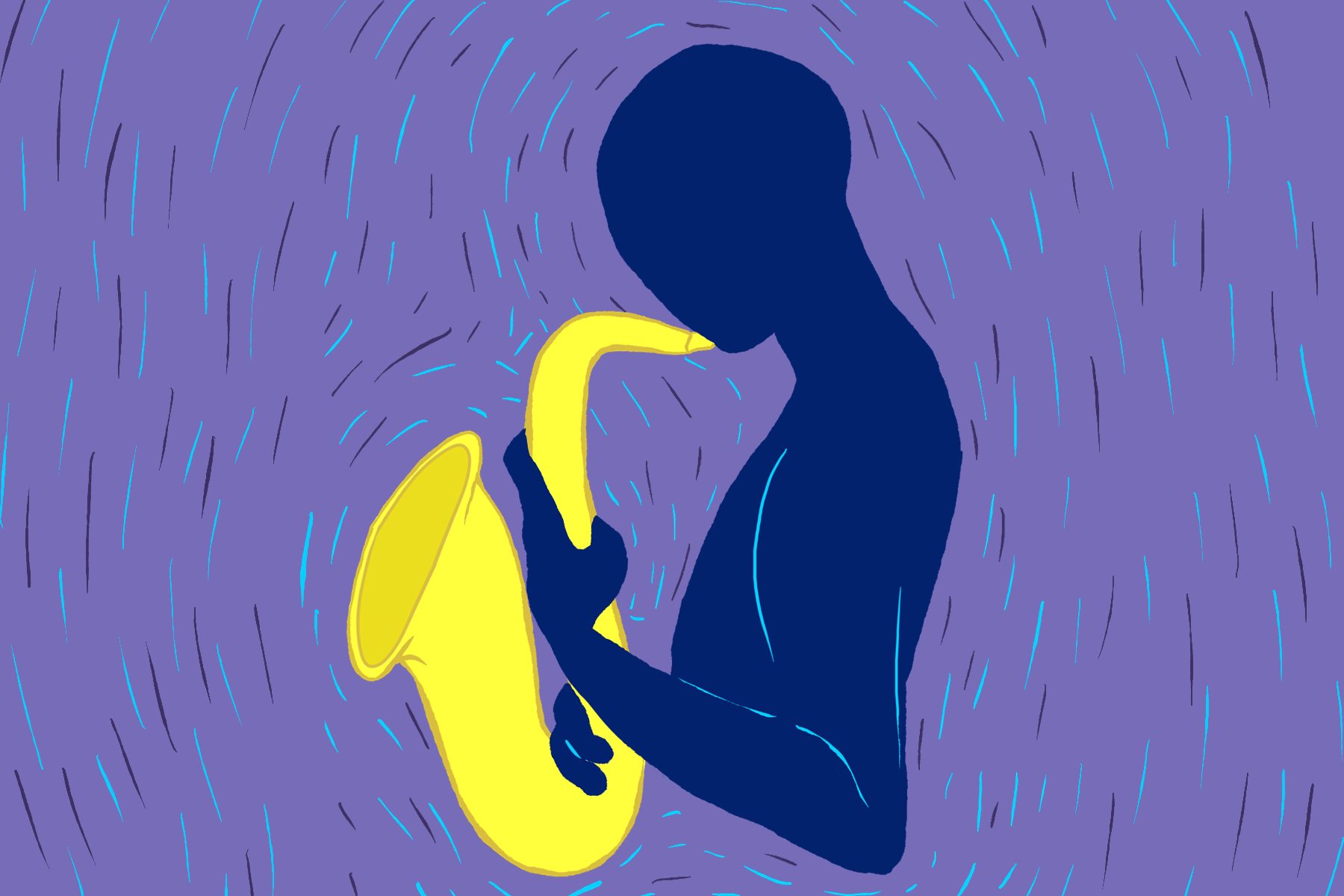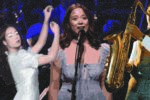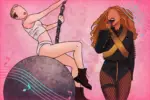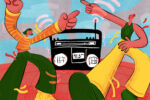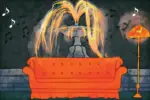Home to jazz icons Kermit Ruffins and Troy “Trombone Shorty” Andrews, the Tremé neighborhood in New Orleans has a personality all its own. Every cracked street and Creole cottage has its own story to tell, some new and some more than a century old. You’ll find people from all walks of life living here: hipsters, artists, musicians, families, recent college grads, business owners and more.
This is indicative of the larger picture of modern New Orleans — a gumbo of all types of people that contribute their own twist to the city’s unique flavor. It’s best reflected in the local music scene, which is unlike any other. New Orleanians are spoiled with an abundance of music in all genres to choose from. So, what do they listen to? The answer really depends on what they’re in the mood for.
In Tremé, residents gather at Candlelight Lounge a few blocks north of Louis Armstrong Park. From the outside, one would never guess this small, rundown building could be the site of a thriving jazz culture. But on the inside, you’ll find free red beans and rice, plenty of liquor and a brass ensemble bringing visitors to their feet. This legendary music club is home to the Treme Brass Band, which often features in jazz funerals and parades around the city. Other brass bands such as the Cory Henry All-Star Brass Band and the Grammy Award-winning Andrews Brothers Brass Band play here as well.
Brass bands were essential to the development of New Orleans jazz in the early 20th century and continue to play a vital role in the city’s music scene today. Marching brass bands, referred to as “second lines,” are still a popular feature in parades year-round. After all, that’s the sound The Big Easy is most known for. Other popular jazz clubs include Sweet Lorraine’s in the Marigny, the site of a surprise Stevie Wonder show after JazzFest 2015, and of course, Preservation Hall in the French Quarter.
https://www.instagram.com/p/B2w6I-TgF5A/
However, New Orleans isn’t just jazz. In the heart of Uptown, at the corner of Napoleon Avenue and Tchoupitoulas Street, lies another famed music club. Founded in 1977, Tipitina’s is a New Orleans institution. The club was originally a place for Professor Longhair, a Crescent City legend, to play in his declining years. Longhair’s mix of blues and southern R&B created some of the greatest New Orleans anthems, such as “Mardi Gras in New Orleans.”
After the Professor, a new wave of the Big Easy’s finest began to develop their unique sounds at Tipitina’s. These acts included the Meters, the Neville Brothers, the Radiators, Dr. John and Troy “Trombone Shorty” Andrews. Many of these artists continue to play here along with a host of other local favorites such as Flow Tribe, Anders Osbourne, the Revivalists, Tank and the Bangas and the Iguanas. The bar has also seen upper echelon national talent as well. Over the years, patrons have been graced with performances from the likes of Stevie Ray Vaughn, the Goo Goo Dolls, Willie Nelson, and Nine Inch Nails.
Unlike clubs such as Candlelight Lounge that specialize in one specific genre, Tipitina’s and similar venues host a wide range of performances to accommodate a diverse clientele. Some older groups are easier to categorize, like the Meters, who essentially laid the foundation for funk while incorporating some jazz style. The same is true of the Neville Brothers, who worked with the Meters and are also all about funk but with an R&B and soul twist. Some are in their own world altogether, like the Radiators, who have quite a particular style. It combines traditional New Orleans jazz styles with mainstream rock and flares of R&B, creating a bouncing potion commonly referred to as “swamp rock” or “fish-head” music.
You might also hear Anders Osborne playing some insane riffs with his band. Osborne was born in Sweden but came to New Orleans to play rock with Americana influences inspired by Bob Dylan, Neil Young and Ray Charles, among other legends. He’s had a long, illustrious career but has become a local treasure.
Another group completely in their own category is the Iguanas. They play a form of Latin rock that draws in jazz, blues and soul styles. They’re different from what native New Orleanians are used to, but they still perform regularly in bars across the city despite being formed back in 1989. In fact, most of the older New Orleans “modern classics,” if you will, still play regularly, either in venues and bars or at music festivals like Austin City Limits or JazzFest.
Newer groups are harder to categorize because, thanks to their predecessors, they have even more inspirations to draw from. Take for instance Tank and the Bangas, who stir up folk, hip-hop, funk and rock in their own groove. They won the RAWards best New Orleans artist of the year and Offbeat Magazine’s emerging artist award in 2014, cementing their place in the Big Easy’s music world.
Slightly older but still relatively new acts include Flow Tribe and Galactic, the band that currently owns Tipitina’s. Both bands are melting pots of styles and characteristics: funk, blues, rock, jazz, soul, folk, hip-hop and more. The new generation combines a heavy mix of the same influences, and yet each artist sounds totally different. That’s New Orleans for you.
Over the past two decades, the Crescent City has also acquired a rich hip-hop/rap culture. With Master P’s No Limit label and Birdman’s Cash Money driving the town’s industry, big time names are coming from New Orleans that includes Boosie Badazz, Curren$y, Soulja Slim, August Alsina and Lil Wayne. More recently, Kevin Gates and $uicideboy$ are the latest artists to take New Orleans rap to the national charts. Even though he’s from Baton Rouge, NBA Youngboy gets the honorable mention.
Looking at the latest artists, Gates is more in line with the southern rap style of his predecessors such as Lil Wayne and Boosie Badazz. His music details the struggles of growing up in a rough area, being in and out of prison and managing fame while raising his daughter. $uicideboy$ is a new form of trap-metal that combines the basic elements of southern trap music with screamo-metal lyric delivery. Their music focuses on a Seventh Ward drug and crime-ridden life while dealing with depression and anxiety.
Walking down Bourbon Street, there are plenty of interesting sights and smells to behold. However, the sounds complete the experience. Every bar will have something different playing, whether it’s rock, funk, indie, jazz, soul or even some hip-hop. Marching brass bands bring an unexpected lively confusion to an already buzzing area and live blues bands on street corners are the most valuable hidden gems. Despite all the different acts that are alive in the city, they all have one thing in common: They all contain a mix of styles that have evolved together to create one true New Orleans sound. So if you ever get the chance, take a stroll through the French Quarter and witness everything for yourself. It’s something you won’t ever forget. Just remember to grab a steaming bowl of spicy gumbo while you’re at it.


